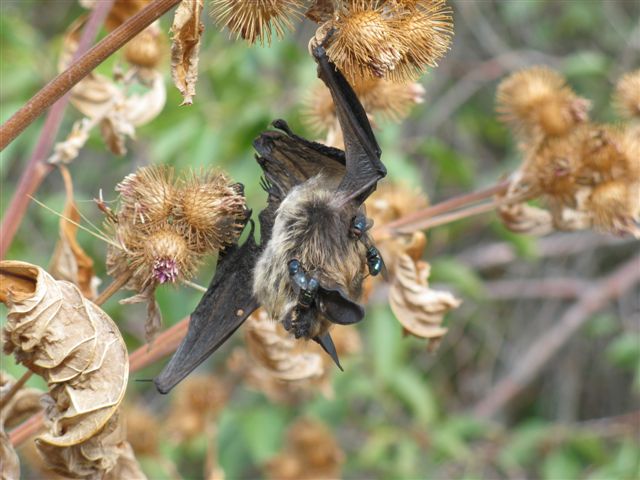Invasive plants may be deadlier than you think, according to one non-profit society.

This week, the Invasive Species Council of B.C. (ISCBC) posted a story on how the burdock plant (Arctium spp) can be fatal to bats.
The plant, with its spiny, rounded flower heads, can inadvertently trap bats, which then can’t free themselves.
“The bat community has been aware of the potential for bats to be snagged on burdock for many years,” said Mandy Kellner, a wildlife biologist with B.C.’s Community Bat Program.
“We always get intermittent reports and photos, but numerous reports have come in this year already. Of course, these incidents are just the ones that people see and report – we don’t really know the full scope of this problem.”

The ISCBC says burdock is a noxious weed that can be found in many parts of the province — commonly along fence lines, roadsides and streams — and that it can spread very easily.

Get breaking National news
According to the province, common burdock plants grow around a metre tall and have hollow lower-leaf stalks. Another type, the great or giant burdock, is similar in appearance but has flowerheads that can be more than 2.5 cm across.

“Bats, birds, basically any small animal can get stuck in burdock, notorious for its rounded flower heads with hooked spines (burrs). These burrs are so sticky they were the inspiration behind velcro,” said Allison McCabe of ISCBC.
As such, the ISCBC says if you see a burdock plant, dig it up and properly dispose of it.
The ISCBC says cutting it down before it flowers is the best remedy. But if it’s already flowering, it can still be dug up – but double bag it and take it to the landfill.
Doing so will help the province’s bat population, which, in turn, helps keep insects at bay.

“Bats are awesome and inherently fascinating,” said Kellner. “They are the unsung heroes of insect control.
“When you consider that each bat can eat up to its weight in insects each night, that’s a lot of insects getting eaten all spring, summer, and fall.”
The ISCBC says there are 15 species of bats in B.C., all of which are insect eaters.
The non-profit society also says bats have a slow reproductive rate, so losing bats to burdock plants can impact local populations.
“Sometimes bats fly too close to burdock while chasing insects, and their wings get stuck,” said ISCBC. “This is just one issue in a list of many facing the bat population in B.C. today.”
For more information about ISCBC, including learning about invasive species identification, visit their website.





Comments